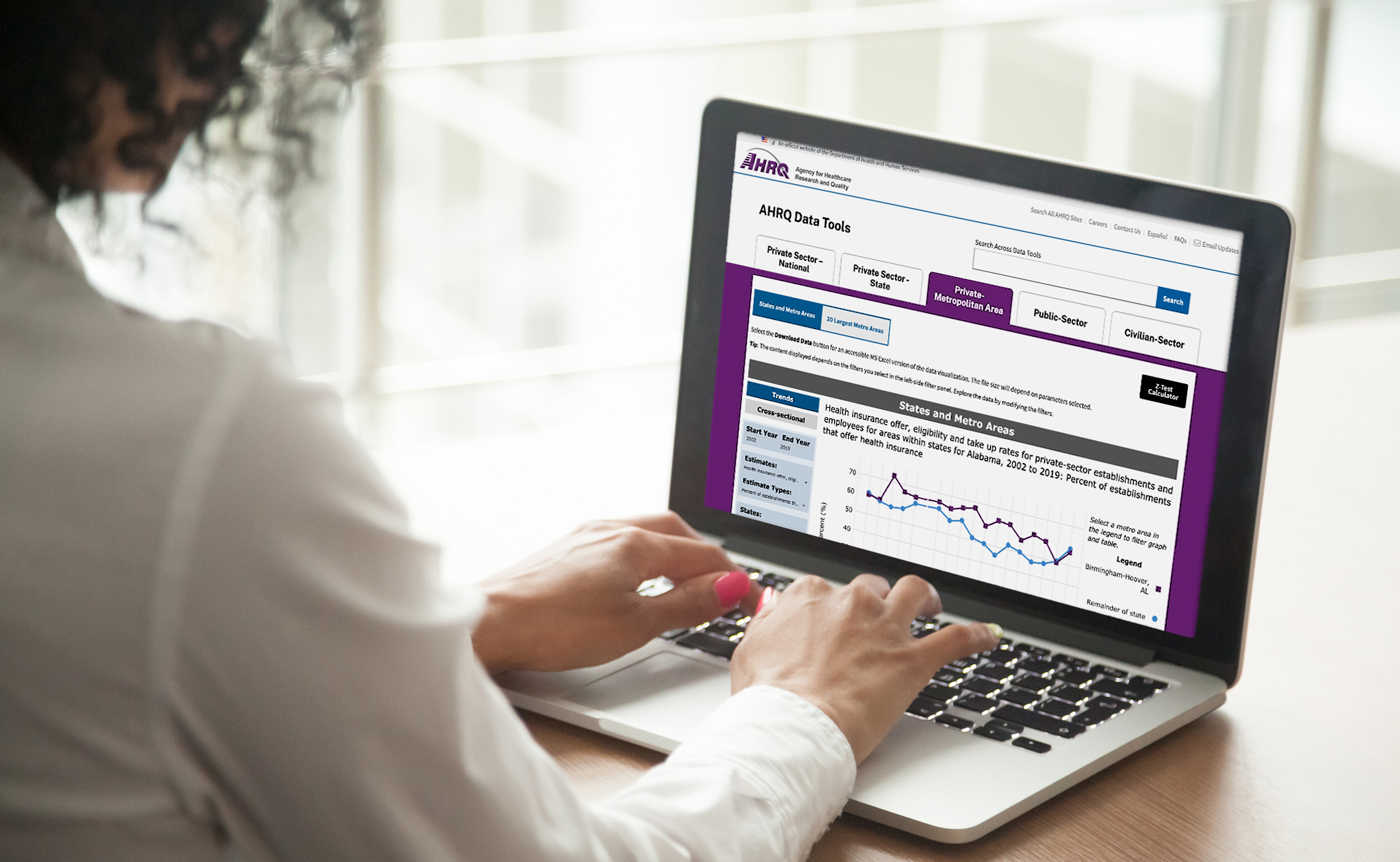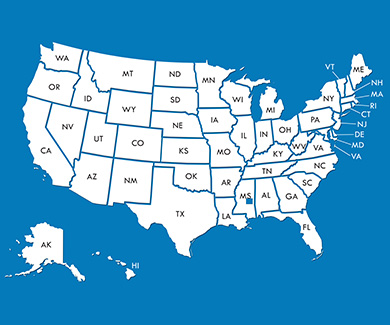AHRQ's data infographics provide visual snapshots of health care trend data. These infographics highlight findings from the Agency’s Medical Expenditure Panel Survey (MEPS), the Healthcare Cost and Utilization Project (HCUP), and other AHRQ data sources. AHRQ’s infographics are available free of charge for posting on web sites, in newsletters, and on other platforms.
AHRQ's interactive data visualization tools allow researchers, policymakers, healthcare leaders, and others to view visual depictions of healthcare trends.
The AHRQ Data Tools allow you to explore AHRQ data sources in depth through bar charts, trend charts, geographic maps, and more. Create and download charts and datasets to support your research.
Data Innovations provides a one-stop shop for AHRQ databases that can enhance research by filling data gaps.
All-payer claims databases (APCDs) are large State databases that include medical claims, pharmacy claims, dental claims, and eligibility and provider files collected from private and public payers.
The Consumer Assessment of Healthcare Providers and Systems (CAHPS) Program supports survey development, voluntary databases, and research on patient experience with healthcare.
HCUP is the Nation’s most comprehensive source of hospital data, including information on in-patient care, ambulatory care, and emergency department visits. HCUP enables researchers, insurers, policymakers and others to study health care delivery and patient outcomes over time, and at the national, regional, State, and community levels.
MEPS is the only national data source measuring how Americans use and pay for medical care, health insurance, and out-of-pocket spending. Annual surveys of individuals and families, as well as their health care providers, provide data on health status, the use of medical services, charges, insurance coverage, and satisfaction with care.
The NHQDR Data Tools allow users to identify populations experiencing disparities in care and areas for improvement in the delivery of healthcare in the United States, as well as the performance of each state.
Established under the Patient Safety and Quality Improvement Act of 2005, the Network of Patient Safety Databases (NPSD) develops informational tools, including dashboards and chartbooks, to make the data available for meaningful, national learning purposes. It draws upon non-identifiable data received through the Patient Safety Organization Privacy Protection Center (PSOPPC) from Patient Safety Organizations and other data sources. The NPSD is administered by AHRQ.
AHRQ Quality Indicators (AHRQ QIs) are standardized, evidence-based measures of healthcare quality that can be used to measure and track clinical performance and outcomes.
Patient safety culture refers to the beliefs, values and norms shared by providers and staff throughout the organization that influence their actions and behaviors. Since 2001, the AHRQ Surveys on Patient Safety Culture (SOPS) Program has supported AHRQ's mission by advancing the scientific understanding of patient safety culture in healthcare settings. The SOPS Program conducts activities to understand, measure, and improve patient safety culture in healthcare settings.
The United States Health Information Knowledgebase (USHIK) was an online, publicly accessible registry and repository of healthcare-related metadata, specifications, and standards. USHIK standards, data, and other artifacts were separated into several portals.










